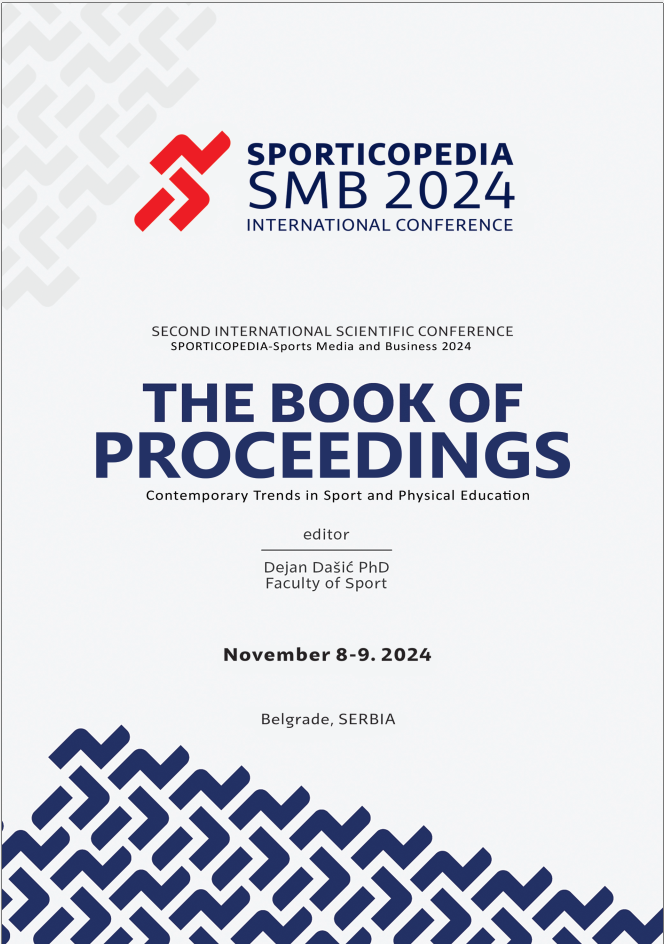Abstract
In contemporary sports research, the combination of qualitative and quantitative methods is becoming increasingly popular due to its ability to provide a more comprehensive understanding of the complexity of sports phenomena. Quantitative methods enable the collection of objective numerical data and the conduction of statistical analyses, while qualitative methods offer deeper insights into experiences, perceptions, and contexts. This paper explores various approaches to mixing these methods in sports research, analyzing the advantages and challenges this methodological approach presents. Through a literature review and case study analysis, examples of successful integration of qualitative and quantitative methods are presented, with a focus on enhancing the validity and reliability of findings. The conclusions of the paper emphasize the importance of methodological pluralism in sports research and propose guidelines for future studies aiming for a holistic understanding of sports phenomena.
References
Allmark P., Machaczek K. (2018). Realism and pragmatism in a mixed methods study. The Journal of Advanced Nursing, 74(6), 1301–1309. https://doi.org/10.1111/jan.13523
Bohne, R. (2024) Most used quantitative methods in the market research industry worldwide 2022. https://www.statista.com/statistics/875970/market-researchindustry-use-of-traditional-quantitative-methods/
Camerino, O., Castaner, M., & Anguera, T. (Eds.). (2012). Mixed Methods Research in the Movement Sciences: Case Studies in Sport, Physical Education and Dance.Routledge.
Dašić, D., Kostadinović, G., & Kim, A. (2023). Market research as a function of marketing development in sports. SPORTICOPEDIA – SMB, 1(1), 273-283. https://doi.org/10.58984/smbic2301273d
Dašić, D., Ilievska Kostadinović, M., Vlajković, M., Pavlović, M. (2024) Digital literacy in the service of science and scientific knowledge. International Journal of Cognitive Research in Science, Engineering and Education (IJCRSEE), 12(1), 219- 227. https://doi.org/10.23947/2334-8496-2024-12-1-219-227
Dašić, D. (2023b) Biographical method in research in sports. Ekonomski signali: poslovni magazin, 18(1), 53-67. DOI: 10.5937/ekonsig2301053D
Dašić, D. (2023a). Application of delphi method in sports. Sport, media and business, 9(1), 59-71. https://doi.org/10.58984/smb2301059d
Gilad, S. (2019). Mixing Qualitative and Quantitative Methods in Pursuit of Richer Answers to Real-World Questions. Public Performance & Management Review, 44(5), 1075–1099. https://doi.org/10.1080/15309576.2019.1694546
Koprivica, V. (2023) Pravci (putevi) razvoja nauke u sportu. U: Dašić, D. (2023) Nauka I sport- metodologija naučnog istraživanja u sportu. Službeni glasnik. Beograd. 227-234
Liu, Y. (2022). Paradigmatic compatibility matters: A critical review of qualitativequantitative debate in mixed methods research. SAGE Open, 12(1). https://doi.org/10.1177/21582440221079922
Mertens, D. M. (2023). Mixed Methods Research: Research Methods. Bloomsbury Publishing.
Mihic, S., Dašić, D., & Bogdanova, M. (2023). Promotion of sports and fitness through health in Serbia. SPORTICOPEDIA – SMB, 1(1), 239-249. https://doi.org/10.58984/smbic2301239m
Onwuegbuzie, A. J; Johnson, R B. , Kathleen, C M T. (2009) Call for mixed analysis: A philosophical framework for combining qualitative and quantitative appro aches.International Journal of Multiple Research Approaches Vil.3. Issuee 2 : 114-139. https://doi.org/10.5172/mra.3.2.114
Ryba, T. V., Wiltshire, G., North, J., & Ronkainen, N. (2020). Developing mixed methods research in sport and exercise psychology: Potential contributions of a critical realist perspective. International Journal of Sport and Exercise Psychology, 20(24). https://doi.org/10.1080/1612197X.2020.1827002
Sedoglavich, V., Akoorie, M. E. M., & Pavlovich, K. (2014). Measuring absorptive capacity in high-tech companies: Mixing qualitative and quantitative methods. International Journal of Business Communication, 9(3), 367-386. https://doi.org/10.1177/1558689814523677
Strijker,D., Bosworth, G., Bouter, G. (2020) Research methods in rural studies: Qualitative, quantitative and mixed methods. Journal of Rural Studies, Volume 78, Pages 262-270. https://doi.org/10.1016/j.jrurstud.2020.06.007
Vuković, M., Dašić, D., & Vuković, A. (2024). Initial steps in preparing a scientific concept outline – formulating the problem and determining the research subject. Sport, media and business, 10(1), 75-90. https://doi.org/10.58984/smb2401075v
Vuković, M., Urošević, S., & Dašić, D. (2023). Threats to objectivity in the social science research. Sport, media and business, 9(2), 143-158. https://doi.org/10.58984/smb2302143v
Vučković, Z. (2022). Metaphorical language in specialized and popular scientific texts. Sport, media and business, 8(1), 97-113. https://doi.org/10.58984/smb2201097v
Vuković, M., & Dašić, D. (2024). Methodology and research methods in public relations. Ekonomski signali: poslovni magazin, 19(1), 67-87. https://doi.org/ 10.5937/ekonsig2401067V
Vuković, M., Riznić, D. & Vuković, A. (2023) The quality of higher education and strategic management. Srpska Akademska Misao, 8(1), 7-21. https://www.sam.edu.rs/index.php/sam/article/view/52


